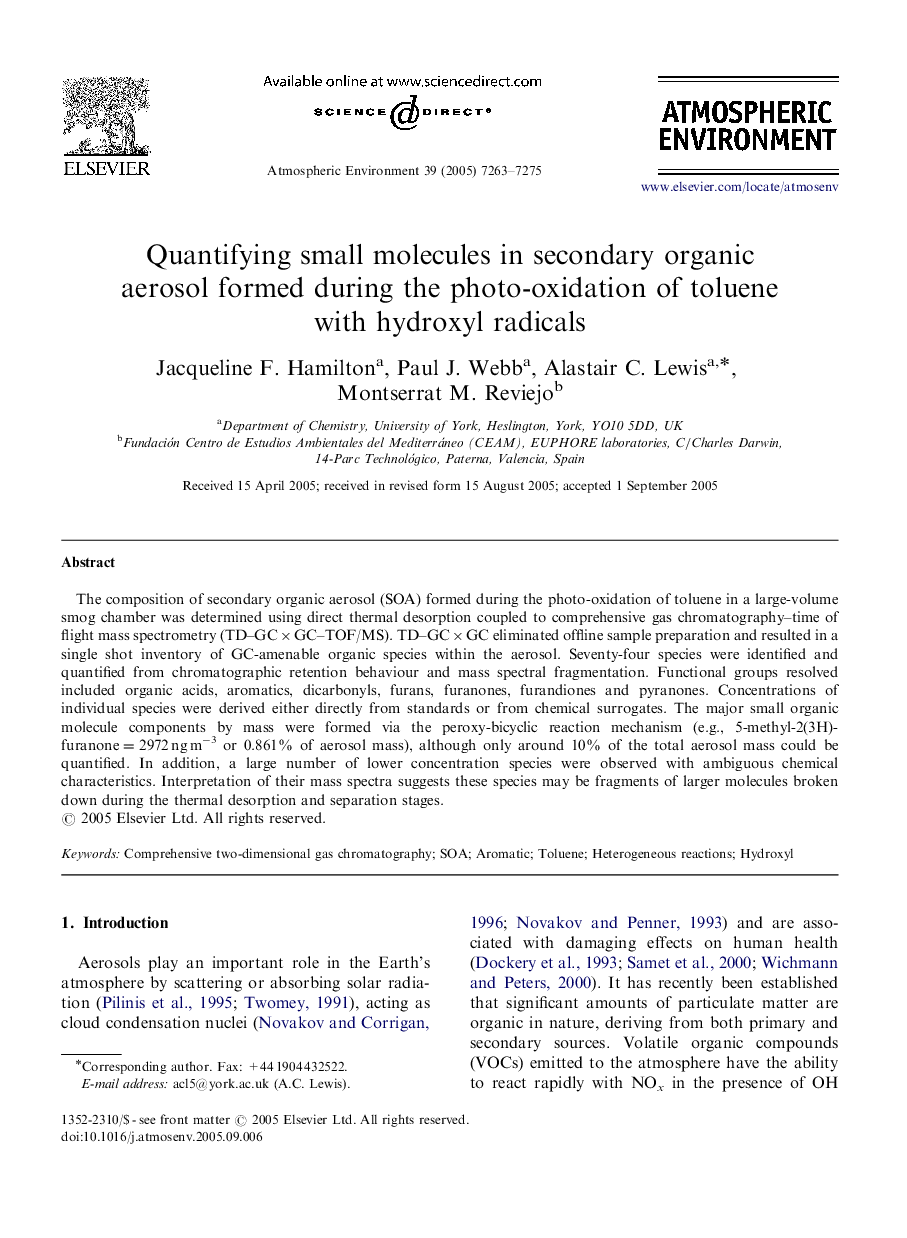| Article ID | Journal | Published Year | Pages | File Type |
|---|---|---|---|---|
| 4444539 | Atmospheric Environment | 2005 | 13 Pages |
The composition of secondary organic aerosol (SOA) formed during the photo-oxidation of toluene in a large-volume smog chamber was determined using direct thermal desorption coupled to comprehensive gas chromatography–time of flight mass spectrometry (TD–GC×GC–TOF/MS). TD–GC×GC eliminated offline sample preparation and resulted in a single shot inventory of GC-amenable organic species within the aerosol. Seventy-four species were identified and quantified from chromatographic retention behaviour and mass spectral fragmentation. Functional groups resolved included organic acids, aromatics, dicarbonyls, furans, furanones, furandiones and pyranones. Concentrations of individual species were derived either directly from standards or from chemical surrogates. The major small organic molecule components by mass were formed via the peroxy-bicyclic reaction mechanism (e.g., 5-methyl-2(3H)-furanone=2972 ng m−3 or 0.861% of aerosol mass), although only around 10% of the total aerosol mass could be quantified. In addition, a large number of lower concentration species were observed with ambiguous chemical characteristics. Interpretation of their mass spectra suggests these species may be fragments of larger molecules broken down during the thermal desorption and separation stages.
